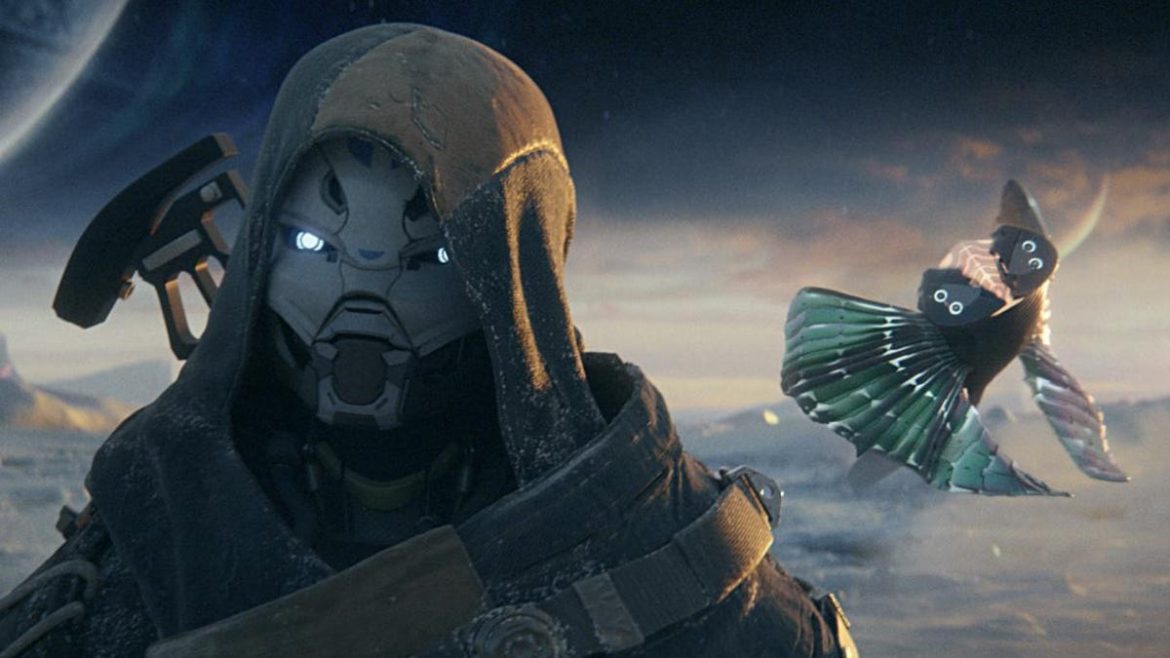Welcome back, readers.
This week’s around-the-site announcement is that the new Keywords is live! This episode’s guests are Regina Seiwald and Ed Vollans, speaking on the topic of paratexts.
This Week in Videogame Blogging is a roundup highlighting the most important critical writing on games from the past seven days.
Hero Mode
Our opening section this week unpacks mythmaking, heroism, ideologies of play, and more.
- Lover ahead: How queerness is rooted in the narrative of Elden Ring | Gayming Magazine
Samantha Greer takes a closer look at gender fluidity, hegemonic order, and lesbian space wives in Elden Ring. - Whose Legend Are We Becoming? | Bullet Points Monthly
Kaile Hultner unspools the ideological impacts when Bungie’s worldbuilding ambitions and live-service design elements come together to form an instant, inherent, and ultimately supremacist model of heroism in Destiny 2.
“Ultimately, the world Destiny 2 envisions, despite all of its smaller and less permanent stories which deepen and complicate our viewpoint, puts Guardians on top of a very tall vertical hierarchy—a tower if you will—below which reside other (Lightless) humans, Cabal, Eliksni, Vex, and Hive. As Guardians, we are allowed to use any and all forms of power in our reach—Light, Darkness, Golden Age tech, arcane Hive weaponry—to accomplish our goals and defeat whatever Big Bad is in front of us. Our designated enemies are not afforded this flexibility, and there is no room, ideologically or mechanically, for us to do anything but point … and shoot.”
Surviving Horrors
Conversations on survival horror are, fairly or not, routinely dominated to this day by a handful of 20-year-old games, even at the expense of their own sequels. How and why do these games enter and remain in collective cultural memory?
- 2002’s ‘Resident Evil’ Showed How Gaming Remakes Should Be Made | Gaming Bible
Ed Smith explores how the Resident Evil remake gets the same-but-different ratio just right, still a relative rarity in remakes broadly. - Silent Hill: The Bad Place | Problem Machine
Problem Machine ponders why the original Silent Hill games continue to be remembered so fondly even as their constituent design attributes age into oblivion.
“Some games, once they get their hooks in you, don’t come out cleanly.”
Limit Breaks
Final Fantasy games over the years developed a reputation for pushing technological boundaries, but what about the side-projects and spinoffs? To understand these smaller titles, it’s important to situate them in their respective times, places, and platforms, like our next two featured writers do here.
- Pieces of History – Final Fantasy Crystal Chronicles on Wiiware | PixPen
Sam Howitt situates a pair of experimental Final Fantasy spinoffs in the context of the WiiWare platform’s humble 40MB size limit. - Hi-speed fantasy – Kimimi The Game-Eating She-Monster
Kimimi finds something refreshing in Final Fantasy Mystic Quest‘s stripped-down, tightly-paced approach to the JRPG format compared to its more grandiose contemporaries.
“As whirlwind as all that is Mystic Quest doesn’t feel shallow for it, and the reason for that has already been demonstrated by those repetitively obvious manual entries I mentioned earlier: The game never makes the mistake of trying to pretend it’s any more complicated than it really is.”
Between Lands
Next up, three meditations on design in virtual worlds.
- ‘Ghostwire: Tokyo’ Feels as Empty and Abandoned as Its City | Epilogue Gaming
Flora Eloise sums up the rain-slick abandoned streets of Ghostwire: Tokyo as an arresting place to visit without much of substance to do. - The Elder Scrolls 3: Morrowind changed everything | Polygon
Bianca Ryckert looks back upon Vvardenfell as a place equal parts enticing and uncompromising. - Why I Left the Lands Between to Return to Yharnam | Paste
Dia Lacina returns to Bloodborne as a game of fricative contradictions, a frustrating, ideal counterpoint to the expansive, frictionless Elden Ring.
“The reward is in the mayhem, turning a corner into a dead end. Smashing a squad of powered up Garden of Eyes and then backing into a hallway to nowhere only to barely survive a Winter Lantern encounter where the frame rate drops to the teens as I bring the wheel down on that tremendous head. Muck-drenched, blood spattered, and covered in soot, Lady Caroline smiles with textures never meant to be upscaled to 4K by a cheap 55” TV. We go back, we do it again. There’s no traversal. No getting from one dungeon to the next. We leave, we go back. Effortlessly pursuing more friction to surmount.”
Critical Chaser
A short, sentimental reflection closes out our issue this week.
- A Verdant Keyframe | Into The Spine
Phoenix Simms reminisces about time and space, moments of being, and Valkyrie Profile.
“When I turned off the console, I listened to my sea of trees outside.”
Subscribe
Critical Distance is community-supported. Our readers support us from as little as one dollar a month. Would you consider joining them?
Contribute
Have you read, seen, heard or otherwise experienced something new that made you think about games differently? Send it in!


